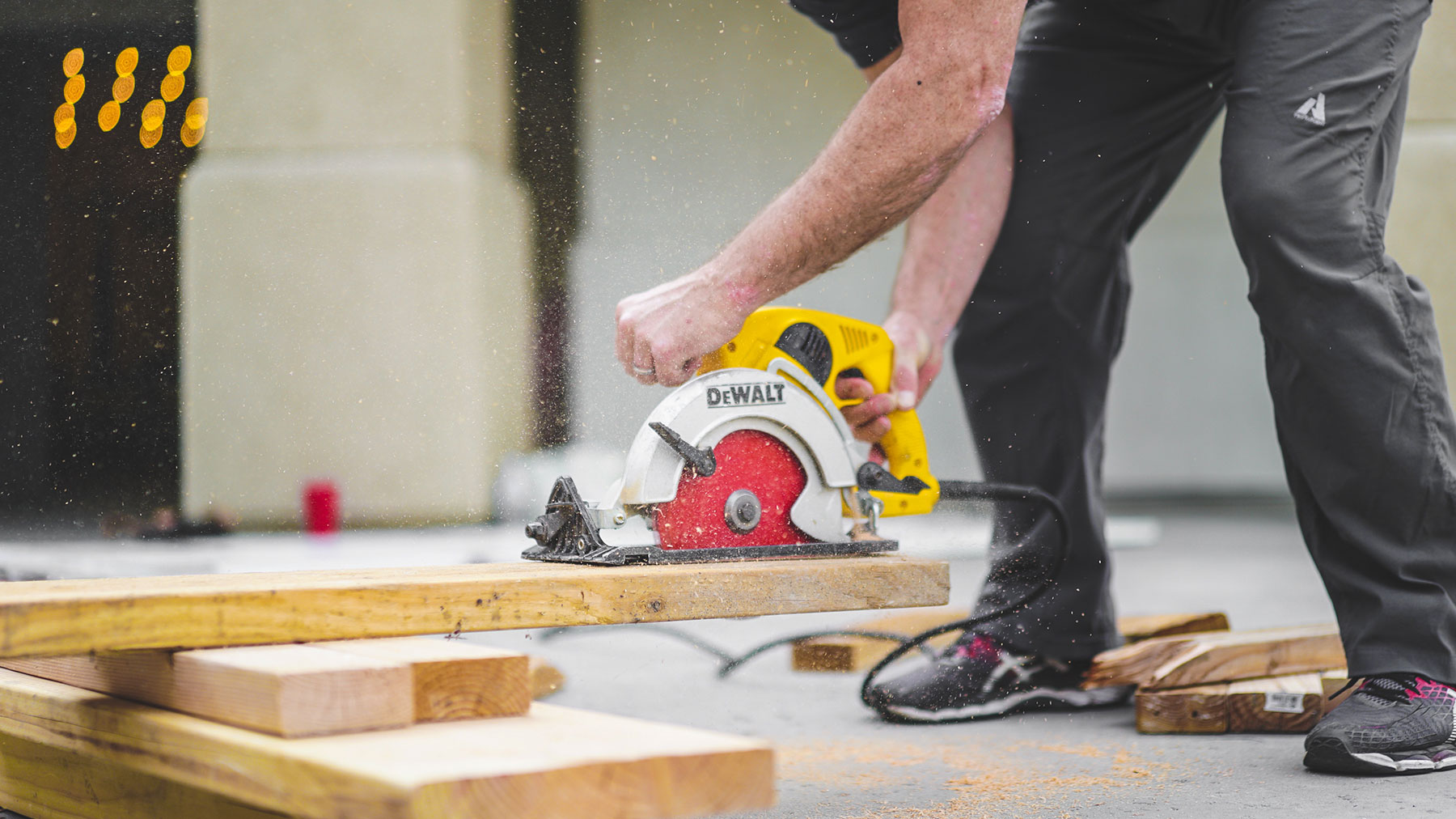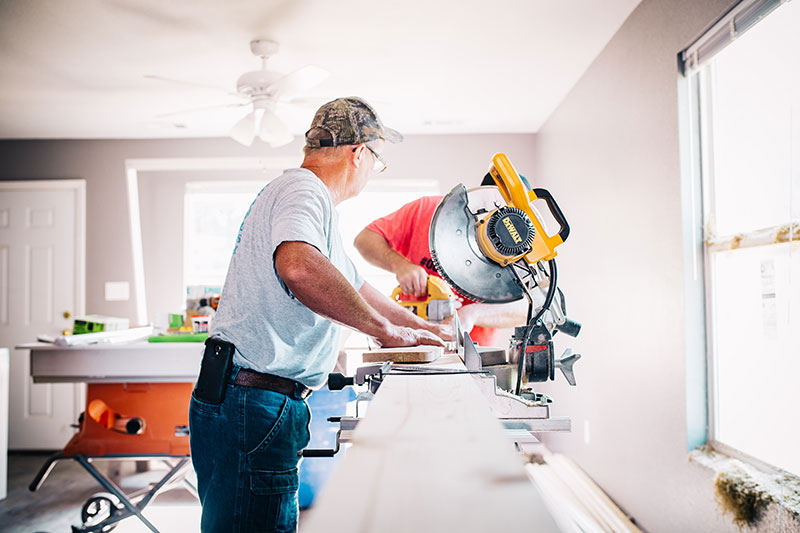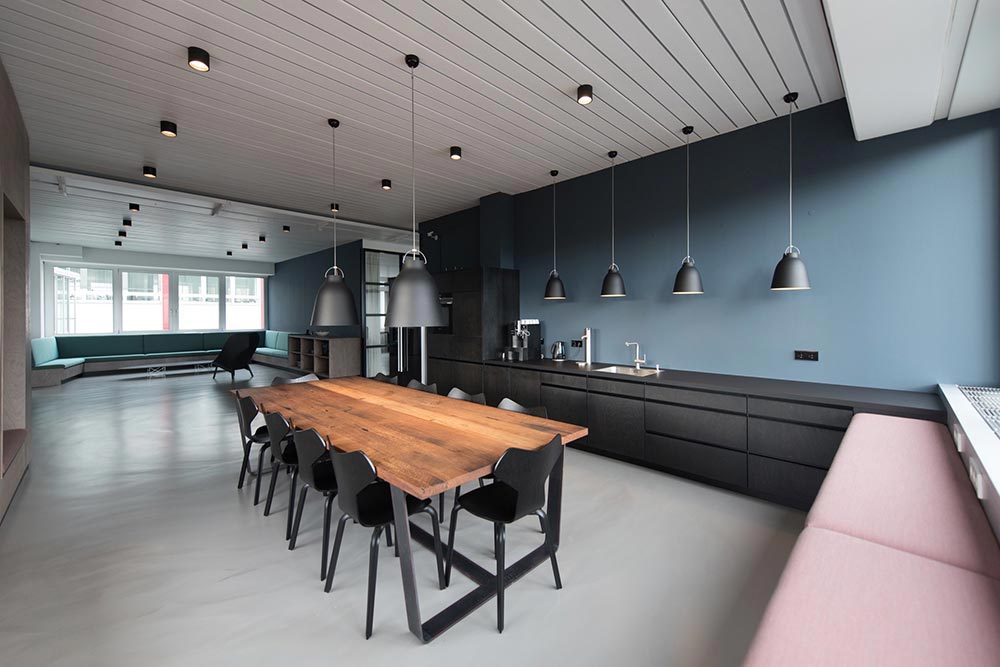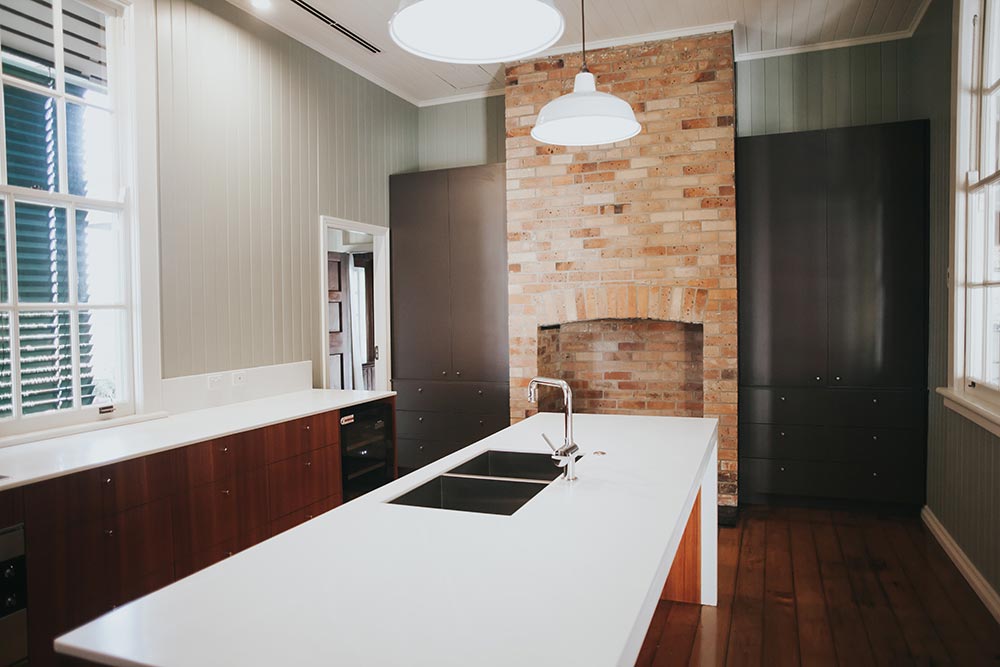
GEORGIA AND DAUGHTER
We Build Inspired Home Spaces.




We Bring Ideas Home.
Ut elit tellus, luctus nec ullamcorper mattis, pulvinar dapibus leo. Lorem ipsum dolor sit amet, consectetur adipiscing elit. Ut elit tellus, luctus nec ullamcorper mattis, pulvinar dapibus leo.
- Interior Design
- Architecture
- Project Management

What You Need To Know About Managing Foot Pain Effectively
Foot pain is a common issue that can affect people of all ages. Whether it’s caused by injury, poor posture, or underlying medical conditions, managing foot pain effectively is crucial to maintaining mobility and overall quality of life.
This article will guide you through the causes of foot pain, available treatments, and strategies for managing and preventing discomfort.

Visit our website to find the best podiatrist in Melbourne who can assist you with your foot health needs.
Understanding Foot Pain
Foot pain can stem from a variety of factors. Understanding the root cause is key to determining the most effective treatment plan. Below are some common causes of foot pain:
Common Causes Of Foot Pain
- Plantar Fasciitis: This condition occurs when the tissue that runs across the bottom of your foot becomes inflamed. It’s one of the most common causes of heel pain.
- Arthritis: Joint inflammation can cause pain, stiffness, and swelling in the foot.
- Bunions: These are bony bumps that form at the base of the big toe, causing pain and swelling.
- Hammertoe: A deformity of the toe that causes it to bend, leading to pain, especially when wearing shoes.
- Stress Fractures: Small cracks in the bones of the feet caused by repetitive force or overuse.
- Neuropathy: Nerve damage can lead to burning, tingling, or numbness in the feet.
Risk Factors For Foot Pain
Several factors can increase your risk of developing foot pain. These include:
- Age: As you age, your feet undergo changes that may lead to pain, such as a decrease in fatty tissue or joint flexibility.
- Obesity: Excess weight places additional pressure on the feet, which can lead to conditions such as plantar fasciitis.
- Footwear: Wearing ill-fitting shoes, particularly those with high heels or inadequate arch support, can cause or worsen foot pain.
- Medical Conditions: Conditions like diabetes, arthritis, and gout can increase the likelihood of experiencing foot pain.
How To Manage Foot Pain
Effective management of foot pain requires a multi-faceted approach that addresses the underlying cause and provides relief from discomfort.
Rest And Elevation
One of the simplest ways to manage foot pain is through rest. Avoid putting excessive pressure on the affected foot to give it time to heal. Elevating the foot can also help reduce swelling, particularly in the case of injury or inflammation.
- How to Elevate Your Foot: When resting, try to elevate your foot to a level above your heart. This helps improve circulation and reduces swelling.
Cold And Heat Therapy
Both cold and heat treatments can help manage foot pain, depending on the cause.
- Cold Therapy: Applying an ice pack to the affected area can reduce inflammation and numb the pain. Cold therapy is beneficial in the first 48 hours after an injury.
- Heat Therapy: Heat can help relax muscles and improve blood flow. This is particularly useful for conditions like arthritis or muscle tension.
Footwear Adjustments
Choosing the proper footwear is one of the most critical steps in managing foot pain. Ill-fitting shoes can exacerbate or even cause foot problems.
- Proper Fit: Shoes should provide adequate support, especially in the arch and heel. Avoid tight shoes, especially around the toes.
- Orthotics: Custom orthotic insoles can provide additional arch support and cushioning, reducing pressure on the feet.
- Avoid High Heels: High heels can place undue stress on the feet, leading to pain and deformities like bunions and hammertoes.
Stretching And Strengthening Exercises
Stretching and strengthening exercises can be incredibly effective in managing foot pain, particularly if the pain is caused by conditions such as plantar fasciitis or Achilles tendonitis.
- Plantar Fascia Stretch: Sit with one leg extended in front of you. Use a towel or belt to gently pull your toes towards your shin by wrapping it around the ball of your foot. Hold for 30 seconds, and repeat several times a day.
- Toe Raises: Stand with your feet flat on the ground, then slowly raise your heels, lifting your body weight onto the balls of your feet. Hold for a few seconds before lowering back down. This helps strengthen the muscles in your feet and calves.
Medical Treatments
If home remedies and lifestyle changes are not effective in managing foot pain, it may be time to consult a healthcare provider. Some medical treatments for foot pain include:
- Corticosteroid Injections: For conditions such as plantar fasciitis or arthritis, a corticosteroid injection can help reduce inflammation and alleviate pain.
- Surgery: In severe cases, surgery may be required to correct deformities or remove damaged tissue. This is typically only considered when other treatments have failed.
Preventing Foot Pain
While some foot pain is inevitable, there are steps you can take to prevent it from occurring or worsening. Prevention involves maintaining healthy habits and being mindful of how you treat your feet.
Maintain A Healthy Weight
Excess weight puts added pressure on your feet, leading to pain and discomfort. Maintaining a healthy weight can help reduce the strain on your feet and prevent conditions like plantar fasciitis and arthritis.
Practice Good Foot Hygiene
Taking care of your feet can help prevent many common foot problems.
- Wash Your Feet Daily: Clean your feet with soap and water to remove dirt and bacteria.
- Dry Your Feet Thoroughly: Ensure your feet are dry, especially between the toes, to prevent fungal infections.
- Trim Your Toenails Regularly: Cutting your toenails straight across can help prevent ingrown toenails, a common source of foot pain.
Choose Supportive Footwear
As mentioned earlier, wearing shoes with proper support can go a long way in preventing foot pain. Ensure your shoes offer sufficient cushioning, particularly in the arch and heel areas.
Stay Active
Regular physical activity helps keep your feet healthy by improving circulation and strengthening the muscles and ligaments in your feet. Be sure to engage in low-impact exercises, such as swimming or walking, to avoid putting excess strain on your feet.
Use Orthotic Insoles
If you have flat feet or high arches, custom orthotic insoles can help provide additional support and prevent discomfort. These insoles can also help with alignment, reducing the risk of injury and pain.
When To Seek Professional Help
While many cases of foot pain can be managed at home, there are situations when it’s essential to seek professional medical advice.
- Persistent or Severe Pain: If your foot pain persists or worsens after several days of rest and self-care, or if the pain is severe, it’s time to consult a healthcare provider.
- Injury: If you’ve experienced a recent injury, such as a sprain or fracture, seeking medical attention is essential to ensure proper healing.
- Numbness or Tingling: If you experience numbness, tingling, or weakness in your feet, this could indicate nerve damage or another serious condition that requires professional treatment.
Conclusion
Managing foot pain effectively involves understanding the underlying causes, using a combination of treatments, and making lifestyle adjustments. Key strategies for managing foot pain include rest, applying ice and heat therapy, selecting the proper footwear, engaging in regular foot exercises, and maintaining a healthy weight.
If conservative treatments are not effective, seeking professional medical help is crucial for proper diagnosis and treatment. By following these steps, you can reduce foot pain and prevent further issues, allowing you to maintain a higher quality of life.
Frequently Asked Questions
What Are The Best Footwear Options For Managing Foot Pain?
The best footwear for managing foot pain provides proper arch support, cushioning, and a comfortable fit. Shoes with a wide toe box, firm heel support, and cushioning can help reduce pressure on sensitive areas, such as the heels and balls of the feet. Avoid high heels and shoes with narrow or rigid soles, as they can worsen foot pain. Custom orthotic insoles can also offer additional support and comfort.
How Can I Tell If My Foot Pain Requires Medical Attention?
If your foot pain persists despite home remedies, worsens progressively, or is accompanied by symptoms such as swelling, bruising, or difficulty walking, it’s time to seek medical advice. Additionally, if you experience numbness, tingling, or sharp shooting pain, these could be signs of nerve damage or other serious conditions. A healthcare professional can diagnose the underlying cause and recommend appropriate treatment.
Can Exercise Help Reduce Foot Pain?
Yes, specific exercises can help strengthen the muscles in your feet and legs, improving overall foot function and reducing pain. Stretching exercises, such as the plantar fascia stretch or Achilles tendon stretches, can help ease tension in the feet. Strengthening exercises, such as toe raises and foot rolls, can help support the muscles and prevent pain from recurring. However, be sure to avoid activities that exacerbate pain and consult a professional for tailored advice.
What Are The Best Ways To Save On Budget-Friendly Stays Without Compromising Comfort?
When it comes to travel, finding budget-friendly stays that don’t compromise comfort is the dream of many travellers. Whether you’re planning a short city getaway or an extended vacation, securing a place to stay that fits your budget and offers a high level of comfort is crucial for a pleasant trip.
Fortunately, there are many strategies to help you save money on accommodation without sacrificing the quality of your stay.

In this guide, we’ll share some of the best ways to save on budget-friendly stays while ensuring you enjoy a comfortable and enjoyable trip.
For more tips and recommendations, you can find out more on our website.
Book In Advance For Better Deals
Booking your accommodation in advance is one of the most effective ways to secure a budget-friendly stay. Most hotels, hostels, and rental properties offer discounts for bookings made in advance. By planning, you can often find lower rates and ensure you’re getting the best value for your money.
Why Early Booking Matters
- Better Prices: Hotels often offer special promotions or discounts for guests who book early.
- Availability: Booking in advance ensures you have a wider selection of rooms and accommodations to choose from.
- Peace of Mind: Secure your stay in advance and avoid the stress of last-minute searching, especially during peak travel seasons.
How Far In Advance Should You Book?
- 3 to 6 Months Before: For major travel destinations or busy seasons, booking 3 to 6 months ahead gives you the best chance of securing great deals.
- 2 to 4 Weeks Before: For off-peak times, booking 2 to 4 weeks in advance may still provide decent savings.
Use Accommodation Comparison Websites
Accommodation comparison websites, such as Booking.com, Expedia, and Trivago, can help you compare prices across various hotels and rentals. These platforms often list multiple options with varying price points, so you can quickly find a budget-friendly stay that meets your comfort preferences.
Benefits Of Comparison Websites
- Side-by-Side Price Comparison: Easily compare prices for similar accommodations to find the most affordable option.
- Customer Reviews: Read reviews from other travellers to ensure the property meets your expectations in terms of comfort and quality.
- Price Alerts: Some comparison websites offer price alerts that notify you when a property you’re interested in drops in price.
Tips For Using Comparison Websites
- Look for Discounts: Many websites offer additional discounts or coupons for first-time users or loyalty members.
- Set Filters: Use the search filters to sort by price, location, and amenities, narrowing down your options to find the best deal.
Consider Alternative Accommodations
Hotels are not the only option for budget-friendly stays. Exploring alternative accommodations, such as hostels, guesthouses, vacation rentals, and homestays, can offer excellent savings without compromising on comfort.
Types Of Alternative Accommodations
- Hostels: Ideal for solo travellers or those looking to meet new people, hostels often offer shared or private rooms at affordable rates.
- Vacation Rentals: Platforms like Airbnb and Vrbo offer access to apartments, homes, and rooms that provide more space and comfort than a hotel room.
- Guesthouses and B&Bs: Smaller and more personal than hotels, guesthouses and bed-and-breakfasts can provide a comfortable stay with a local touch.
- Homestays: Staying with a local family can offer cultural immersion and lower prices compared to traditional accommodations.
How To Find The Best Alternative Stays
- Check Reviews: Always read reviews from past guests to ensure a comfortable and clean stay.
- Look for Amenities: Ensure the accommodation offers essential amenities, such as Wi-Fi, a comfortable bed, and access to a kitchen if necessary.
Travel During Off-Peak Seasons
One of the most effective ways to save on accommodation without compromising comfort is by travelling during off-peak seasons. Many popular tourist destinations experience lower demand during certain times of the year, resulting in significant savings on hotel rates and other accommodations.
Benefits Of Off-Peak Travel
- Lower Prices: Accommodation prices drop during off-peak seasons, making it easier to find affordable options.
- Less Crowding: With fewer tourists, you can enjoy a more relaxed and peaceful experience, free from the crowds.
- Special Offers: Hotels and rental properties often offer promotions and discounts during off-peak times to attract visitors.
When Is The Off-Peak Season?
- Avoid School Holidays: Plan your trip during school terms to avoid the surge in domestic travel.
- Check Local Events: Avoid major events and festivals in popular destinations, as these can drive up accommodation prices.
Use Loyalty Programs And Membership Discounts
Many hotels and travel platforms offer loyalty programs that reward frequent travellers with discounts, upgrades, and other perks. Signing up for these programs can help you save money on future stays and enjoy extra comfort during your trips.
Types Of Loyalty Programs
- Hotel Chain Loyalty Programs: Major hotel chains offer points for every stay, which can be redeemed for discounts or complimentary nights.
- Travel Rewards Cards: Using a travel rewards credit card can earn you points for every purchase, which can be redeemed for hotel stays, flights, or other travel-related expenses.
- Membership Discounts: Some platforms offer exclusive discounts on hotels and other accommodations.
How To Maximise Loyalty Benefits
- Book Directly: Often, booking directly with a hotel or accommodation provider will allow you to earn loyalty points.
- Take Advantage of Member-Only Offers: Keep an eye out for special promotions available only to loyalty program members.
Consider Location And Transportation Costs
When booking a budget-friendly stay, consider the location of your accommodation. While it may be tempting to book a place in the heart of a city or near major attractions, these locations often come with higher rates. Staying a little further from the main tourist spots can save you money on accommodation and transportation.
Benefits Of Staying Outside The City Centre
- Lower Accommodation Rates: Properties located outside the main tourist areas are generally more affordable.
- More Authentic Experience: Staying in a local neighbourhood can offer a more authentic and unique travel experience.
How To Save On Transportation
- Use Public Transportation: Opt for accommodations with easy access to public transportation to avoid the cost of taxis or car rentals.
- Walk or Rent a Bike: Many destinations are easily walkable, and renting a bike can be a budget-friendly and enjoyable way to explore.
Take Advantage Of Free Amenities And Services
Many accommodations offer free amenities that can help you save money during your stay. Look for hotels or rentals that include free breakfast, Wi-Fi, or even shuttle services to major attractions.
Common Free Amenities
- Breakfast: Many hotels and hostels offer free breakfast, saving you money on meals.
- Wi-Fi: Free Wi-Fi is essential for staying connected and saving on mobile data or roaming charges.
- Shuttle Services: Some hotels offer free shuttle services to airports or nearby attractions.
How To Find Accommodations With Free Amenities
- Check Hotel Websites: Many hotels advertise their complimentary amenities on their websites, so be sure to review them before booking.
- Look for Package Deals: Some platforms offer package deals that include free amenities as part of the booking.
Conclusion
When it comes to saving on budget-friendly stays without compromising comfort, the key is to plan, be flexible with your travel dates, and use available resources wisely. Whether you book in advance, use comparison websites, or opt for alternative accommodations, there are numerous ways to find affordable options that still offer comfort and convenience.
By combining strategies such as travelling during off-peak seasons, joining loyalty programs, and considering location and transportation costs, you can have a great travel experience without breaking the bank.
Frequently Asked Questions
How Can I Find Budget-Friendly Accommodations Without Sacrificing Comfort?
To find budget-friendly accommodations without sacrificing comfort, consider booking in advance, using comparison websites, and exploring alternative lodging options, such as hostels, guesthouses, or vacation rentals. Additionally, consider travelling during off-peak seasons to take advantage of lower prices, and look for hotels or rentals that include complimentary amenities, such as breakfast or Wi-Fi, to save even more.
What Are The Best Times To Book A Hotel For The Best Price?
Booking a hotel 3 to 6 months in advance is often the best strategy for securing a great price, especially for popular destinations or peak seasons. However, if you’re travelling during off-peak times, booking 2 to 4 weeks ahead can still result in significant savings. Constantly monitor comparison websites for price drops and special offers.
Is It Worth Joining A Hotel Loyalty Program To Save Money On Stays?
Yes, joining a hotel loyalty program can offer long-term savings, especially if you travel frequently. Many programs allow you to earn points for each stay, which can be redeemed for discounts, free nights, or upgrades. Additionally, loyalty members often receive exclusive offers and perks, making it a smart choice for frequent travellers.
What Are The Smartest Ways To Grow Wealth In 2025?
As we approach 2025, the financial environment continues to evolve, with new investment opportunities and challenges. The key to growing wealth effectively in this period is to adapt to these changes and make informed decisions. From traditional strategies, such as real estate investment, to newer approaches like sustainable investing, there are numerous paths to consider.

In this article, we’ll explore the most innovative ways to grow wealth in 2025, with an Australian perspective on how to leverage these strategies best.
Click this link to visit our website and get the assistance you need.
Smart Investment Strategies For 2025
When it comes to growing wealth, one of the most essential factors is investing. In 2025, it’s important to consider a diverse range of investment opportunities to secure long-term financial growth.
Diversifying Your Investment Portfolio
One of the golden rules of investing is diversification. In 2025, with volatility expected across global markets, diversifying your portfolio is crucial for managing risk and positioning yourself for growth.
To ensure you’re well-positioned for wealth creation, consider diversifying across:
- Australian Stocks: Invest in both established companies and emerging sectors such as green technology and healthcare, which are forecast to see strong growth in the coming years.
- Bonds: Australian government bonds and corporate bonds offer a stable, low-risk option for those seeking to diversify their portfolio.
- Real Estate: Australia’s property market has been a reliable source of wealth, especially in cities like Sydney, Melbourne, and Brisbane, where population growth continues to drive demand.
- Commodities: Australian resources, such as gold, coal, and lithium, are expected to remain in high demand, presenting a strong investment opportunity.
By spreading your investments across multiple asset classes, you’re reducing risk while taking advantage of a variety of market opportunities.
Ethical And Sustainable Investing
Ethical and sustainable investing is expected to become increasingly significant. Australian investors are showing a growing interest in companies that follow Environmental, Social, and Governance (ESG) guidelines, with many businesses now prioritising sustainability.
Investing in sustainable companies is a long-term strategy for wealth building as the world shifts toward eco-conscious business practices. Some key areas to watch include:
- Renewable Energy: As Australia accelerates its transition to renewable energy, investing in solar, wind, and battery storage companies presents a promising opportunity.
- Electric Vehicles (EVs): Australia is expected to continue its transition to EVs, and companies involved in this sector are likely to experience significant growth in 2025.
- Green Tech: Companies developing energy-efficient technologies or addressing environmental challenges are likely to see strong returns.
Focusing on sustainable industries not only helps you align your investments with your ethical values but also positions you for growth as the global economy increasingly prioritises environmental responsibility.
Exploring Alternative Investments
In 2025, investors are likely to see alternative investment vehicles gaining traction. These include assets outside of traditional stocks and bonds, such as venture capital, private equity, art, and cryptocurrencies.
Some alternative investments to consider:
- Cryptocurrencies: Digital currencies are becoming more mainstream, with investors in Australia becoming more interested in cryptocurrencies like Bitcoin and Ethereum as part of their portfolios.
- Venture Capital: For those with a higher risk tolerance, investing in early-stage Australian startups, particularly in the tech and fintech sectors, could yield substantial returns.
- Art and Collectibles: As traditional investment markets experience volatility, alternative assets such as art and vintage items can become increasingly attractive as a means of wealth growth.
These alternative investments offer opportunities to gain exposure to new, emerging markets, and in some cases, they can generate substantial returns.
Building Wealth Through Passive Income
Passive income is a crucial component of wealth-building. This approach enables individuals to earn money without requiring continuous active effort, making it easier to accumulate wealth over time. In 2025, there are several ways to generate passive income, especially in Australia.
Real Estate Investment For Passive Income
Real estate remains one of the most stable and rewarding sources of passive income in Australia. Whether it’s through long-term rentals, short-term stays, or commercial properties, the Australian property market offers a variety of opportunities.
To generate passive income from real estate:
- Long-Term Rentals: Investing in residential property in high-demand suburbs can yield reliable rental returns. Cities like Sydney and Melbourne experience strong rental demand due to their high population growth rates.
- Short-term rentals: Platforms like Airbnb are incredibly popular in Australia, particularly in tourist-heavy locations. Property owners can earn premium rates through short-term rentals.
- Commercial Property: The commercial property market offers the chance for consistent rental returns, particularly in growing business districts or industrial areas.
Real estate remains a solid strategy for generating passive income in Australia, particularly if you focus on areas with strong growth prospects.
Dividend Stocks For Consistent Income
Dividend stocks are another excellent source of passive income in 2025. Many Australian companies pay regular dividends to their shareholders, providing a steady stream of cash flow. These dividends can either be reinvested or used as income.
Some tips for investing in dividend stocks:
- Blue-Chip Stocks: Large, established companies with a history of stable earnings and reliable dividend payouts, such as the big banks in Australia, should be part of your portfolio.
- REITs: Real Estate Investment Trusts (REITs) are an attractive option for those looking to invest in real estate without purchasing physical properties. These trusts pay out high dividends, making them a good choice for passive income.
By focusing on stocks that provide consistent dividends, you can steadily grow your wealth without having to rely solely on capital appreciation.
Online Businesses And Passive Income Streams
In 2025, many Australians are looking to build wealth through online businesses or side hustles that generate passive income. These ventures require upfront work but can generate ongoing income with minimal effort.
Some online business ideas for passive income:
- Affiliate Marketing: Promoting other people’s products and earning a commission can be a highly scalable business model.
- Online Courses and Ebooks: If you have expertise in a particular area, creating online courses or selling ebooks can generate continuous income over time.
- Dropshipping: This business model enables you to sell products online without holding inventory, making it a cost-effective way to establish an online presence.
With the right strategies in place, an online business can provide a reliable and scalable source of passive income.
Managing Your Wealth Wisely
In addition to making smart investments and generating passive income, managing your wealth effectively is just as important. Without sound financial management, it’s easy to lose sight of your goals or make poor decisions that could erode your wealth.
Regularly Reviewing Your Investments
It’s essential to stay engaged with your investments and adjust them as needed. Markets can change quickly, and so can your financial goals. In 2025, ensure you regularly review your portfolio to make sure it still aligns with your objectives.
Rebalancing your portfolio is a crucial part of wealth management, particularly when certain assets become overrepresented due to strong growth.
Minimising Taxes
Taxation is one of the most significant barriers to wealth accumulation. By understanding tax laws and employing strategies to minimise your tax liabilities, you can keep more of your earnings. Some common tax minimisation strategies in Australia include:
- Tax-Effective Investments: Certain investments, such as superannuation contributions, can reduce your taxable income.
- Negative Gearing: In Australia, property investors often utilise negative gearing to offset rental income losses against their taxable income, thereby reducing their overall tax burden.
Protecting Your Wealth With Insurance
Wealth protection through insurance is often overlooked but is essential in safeguarding your assets. Ensure you have adequate coverage, including life insurance, health insurance, and income protection insurance, to safeguard yourself and your family against unforeseen events.
Conclusion
In 2025, growing wealth is about more than just making smart investments; it requires diversification, ethical investing, exploring alternative assets, generating passive income, and managing your wealth effectively.
By following these strategies and staying informed about emerging trends, you can build and preserve wealth in an increasingly complex financial landscape. The most innovative ways to grow wealth in 2025 involve a combination of traditional and modern approaches, each tailored to your financial goals and risk tolerance.
Frequently Asked Questions
What Are The Best Investment Strategies To Grow Wealth In 2025?
In 2025, the most effective investment strategies involve diversification, investing in sustainable and ethical companies, and exploring alternative assets such as cryptocurrencies and real estate crowdfunding. Diversifying your portfolio across various asset classes, including stocks, bonds, and commodities, will help you manage risk while positioning yourself for growth. Ethical investing, particularly in green energy and technology, presents opportunities for long-term returns as industries transition towards sustainability.
How Can I Generate Passive Income In 2025?
Generating passive income in 2025 can be achieved through various avenues, including real estate investment, dividend-paying stocks, and online businesses. Real estate remains a reliable source of income through long-term or short-term rentals, while dividend stocks offer a steady cash flow. Additionally, building online businesses, such as affiliate marketing or creating digital products, can offer scalable, passive income streams over time.
What Should I Consider When Managing My Wealth In 2025?
Effective wealth management in 2025 requires regularly reviewing your investments to ensure they align with your financial goals. Tax minimisation strategies, such as investing in superannuation or utilising negative gearing for property investments, can help you retain a greater portion of your earnings. It’s also crucial to protect your wealth with insurance to safeguard against unexpected events that could impact your financial security.
Why Invest In A Service Body?
When it comes to owning and maintaining a utility truck, one of the most important decisions you’ll make is whether or not to invest in a service body. For businesses that rely on their vehicles for day-to-day operations, adding a service body can significantly enhance the functionality, efficiency, and safety of your fleet.
In this article, we’ll explore seven key reasons why investing in a truck service body is a sound business decision and how it can improve your operations. Whether you’re in construction, plumbing, electrical work, or any other field that requires tools and equipment transport, a service body can help streamline your business’s workflow.

If you want to get more out of your fleet, visit our website for expert advice and assistance.
Enhanced Organisation
Efficient Tool Storage
One of the primary benefits of investing in a service body is enhanced organisation. For many tradespeople, tools and equipment are their livelihood, and keeping these items organised is crucial for maintaining productivity. With a service body, you have secure storage for everything from small hand tools to larger machinery.
- Tool Compartmentalisation: Many service bodies come with individual compartments and drawer systems that can be customised to fit your needs. This makes it easier to find what you need quickly, rather than rummaging through an unorganised truck.
- Maximising Space: Service bodies are designed to make the most out of the space in your truck. With adjustable shelves, racks, and bins, you can store tools and materials efficiently, ensuring that you can fit more without sacrificing organisation.
Reducing Time Wasted
With everything in its proper place, employees will spend less time searching for tools, which directly improves the efficiency of the workday. For businesses, time saved means more jobs can be completed, leading to improved profitability.
Improved Safety And Security
Protecting Your Tools
When tools and equipment are left unsecured in an open truck bed, they are vulnerable to theft, weather damage, and wear and tear. A service body provides a secure, lockable space for your equipment, reducing the risk of theft and damage.
- Lockable Compartments: Many service bodies come equipped with secure locking mechanisms for each compartment, offering peace of mind that your tools are safe when you’re away from the vehicle.
- Weather Protection: A service body also protects from the elements. Rain, dust, and extreme temperatures can damage your tools and equipment. A service body keeps everything dry and sheltered, extending the lifespan of your investment.
Preventing Accidents
A well-organised service body helps prevent accidents on the job. By keeping tools secured and out of sight, you reduce the risk of items shifting around or falling out during transit. This not only protects your gear but also prevents injury to yourself, your workers, and other road users.
Increased Efficiency
Streamlined Workflow
Having a service body on your truck helps streamline workflow and increases productivity. With designated spaces for each type of tool, workers can quickly grab what they need without wasting time searching. This allows employees to focus more on the task at hand and less on finding their equipment.
Reducing Downtime
A well-equipped service body reduces the chances of job interruptions. When you have all the necessary tools on-site, there’s no need to return to the shop or make unnecessary trips to gather equipment. As a result, your team stays on the job longer, and projects are completed faster.
Customisation Options
Tailored To Your Needs
Every business has different requirements, and one of the advantages of a service body is that it can be customised to suit your specific needs. From shelving systems to hydraulic lifts, service bodies can be designed to fit your tools, machinery, and the specific demands of your job.
- Flexible Configurations: You can choose from a variety of compartment sizes, layouts, and storage options to ensure that your service body is perfectly suited to your operations.
- Specialised Add-ons: Many service body providers offer specialised features, such as built-in workbenches, lighting, or even power supply systems, to make your truck more functional on-site.
Expanding Business Capabilities
Customising your service body can also expand the services you’re able to offer. For example, adding specialised compartments for extra tools or a mobile workshop can open up new opportunities for business growth.
Whether you’re a plumber, electrician, or general contractor, having the right tools readily available can enhance your ability to take on a variety of projects.
Improved Brand Image
Professional Appearance
A truck with a service body presents a more professional image to your clients. When your vehicle is well-organised and equipped with the necessary tools for the job, it demonstrates reliability, preparedness, and attention to detail. This can help you win more business and increase customer trust.
Marketing Your Business
A service body is also a great marketing tool. Many service bodies feature large, flat surfaces that are perfect for advertising your business’s logo, contact details, and services. This can turn your vehicle into a moving billboard, promoting your business while you’re on the road or at job sites.
Cost-Effectiveness
Saving On Repair And Replacement Costs
Investing in a service body can save you money in the long run. By keeping your tools organised and protected, you reduce the risk of damage and loss. This helps avoid costly repairs or the need for frequent replacements of damaged equipment.
- Longevity of Equipment: By protecting your tools and materials from the elements and theft, they will last longer, reducing the need for costly replacements.
- Less Damage to the Vehicle: Service bodies also help reduce wear and tear on your vehicle. By securely storing equipment in a dedicated body, you can avoid damage to the truck bed and the vehicle’s interior, saving on repair costs.
Enhancing Operational Efficiency
While there is an upfront cost to installing a service body, the savings in time, labour, and lost tools will quickly offset the initial investment. The boost in efficiency also translates into increased revenue, making it a wise financial choice.
Better Resale Value
Retaining Vehicle Value
A service body not only adds value to your vehicle but also helps retain its resale value over time. Trucks with service bodies are often considered more valuable because they offer additional functionality and storage options. This can make your vehicle more attractive to potential buyers if you ever decide to sell it.
Easier To Sell
Since service bodies are typically custom-built, they can make your vehicle stand out in the second-hand market. Buyers who require a work truck will be drawn to the convenience and added features of a vehicle equipped with a high-quality service body. As a result, you may find that your vehicle sells faster and at a higher price than a standard truck.
Conclusion
Investing in a truck service body is a smart decision for businesses that rely on their vehicles for daily operations. It offers a range of benefits, including better organisation, increased safety, and improved efficiency. By providing secure storage for tools and equipment, a service body reduces the risk of theft, damage, and disorganisation.
Customisable to meet specific business needs, it enhances productivity and professionalism. In addition to being cost-effective over time, it also boosts the resale value of your vehicle. Ultimately, a service body is a valuable investment that can improve operations and contribute to long-term business success.
Frequently Asked Questions
What Are The Key Benefits Of Investing In A Truck Service Body?
A truck service body provides several key benefits, including enhanced organisation, improved safety, and increased efficiency. It allows for secure storage of tools and equipment, reducing the risk of theft and damage. Additionally, service bodies streamline workflow by offering organised compartments and easy access to tools, which leads to fewer delays and higher productivity on the job.
Can A Service Body Be Customised To Fit My Business Needs?
Yes, service bodies are highly customisable to meet the specific needs of your business. You can choose from a variety of compartment sizes, shelving systems, and storage options. Many providers also offer specialised features, such as mobile workbenches or power supply systems, allowing you to tailor the service body to your unique requirements.
Is Investing In A Service Body Cost-Effective For My Business?
Although there is an initial investment in a service body, it proves to be cost-effective in the long run. The increased organisation and efficiency help reduce downtime and prevent the loss or damage of tools, saving you money on replacements and repairs. Additionally, a well-maintained service body can increase the resale value of your truck when it’s time to sell.
Why Are Silicone Wedding Bands A Great Alternative To Traditional Rings?
Silicone wedding bands have surged in popularity over the last few years, and it’s easy to see why. As couples seek practical and stylish alternatives to traditional metal rings, silicone offers several advantages that make it a compelling choice. From durability to comfort, here’s why silicone wedding bands are a great alternative to traditional rings.

Visit our website—a useful site that can guide you in finding the perfect silicone wedding band for your needs.
Durability And Longevity
One of the primary reasons silicone wedding bands have gained popularity is their exceptional durability. Traditional metal rings can be easily scratched, bent, or damaged over time, whereas silicone bands are much more resistant to wear and tear.
Silicone Bands: Tougher Than You Think
- Scratch-Resistant: Unlike metal rings, silicone bands are scratch-resistant, ensuring they maintain their appearance over time.
- Heat and Chemical Resistance: Silicone can withstand extreme temperatures and is resistant to most chemicals, making it ideal for individuals who work in environments where exposure to such elements is a daily occurrence.
- Waterproof: Silicone bands won’t rust or corrode when exposed to water, making them perfect for people who love swimming or working with water.
Low Maintenance
- Silicone wedding bands are easy to clean, often requiring just a quick wash with soap and water.
- Unlike traditional rings, they don’t need regular polishing or professional care.
Comfort And Flexibility
Silicone wedding bands provide a level of comfort that traditional metal rings simply can’t match. Because they are soft and flexible, silicone bands adapt to your finger’s natural shape, providing a snug, secure fit.
Benefits Of Comfort And Flexibility
- Non-Constricting Fit: Silicone bands will not constrict your finger, which can be a concern with tight metal rings.
- Breathability: The flexibility of silicone allows for better airflow to your skin, which can reduce sweating or irritation.
- No Pressure Points: Silicone bands are less likely to create uncomfortable pressure points, especially if you have larger knuckles or a more irregular finger shape.
Cost-Effective Alternative
For many couples, the cost of a traditional wedding ring is a significant factor in their decision-making process. High-quality metals, such as gold or platinum, can be expensive, particularly for those purchasing multiple rings.
Affordability Of Silicone Wedding Bands
- Budget-Friendly: Silicone bands are significantly more affordable than traditional rings. A high-quality silicone band can cost a fraction of the price of a metal band, making them an excellent option for those on a budget.
- No Need for Expensive Repairs: Metal rings can sometimes need repairs or resizing, which can add extra costs. Silicone bands, on the other hand, are low-maintenance and often last for years without any need for repairs.
Ideal For Active Lifestyles
Silicone wedding bands are particularly appealing to individuals with active lifestyles. Whether you’re into sports, fitness, or hands-on work, traditional metal rings can be impractical, as they can be damaged or cause injury.
Benefits For Athletes And Workers
- Perfect for Physical Activities: Silicone bands can withstand rigorous physical activities, including running, weightlifting, rock climbing, and swimming.
- Safe for Hands-On Jobs: For people working in trades, silicone rings can be safer than traditional metal bands. Metal rings can get caught in machinery or cause injury, while silicone bands will stretch or break if they catch on something, preventing harm.
Flexible Design For Everyone
- Silicone bands are available in various designs and colours, allowing individuals to choose a style that reflects their personality and interests. Whether you prefer a classic solid colour or something more vibrant, there’s a silicone wedding band for every taste.
Safety And Health Benefits
In addition to their durability and comfort, silicone wedding bands offer several health and safety benefits.
Health Benefits Of Silicone Bands
- Hypoallergenic: Traditional metal rings can sometimes cause skin irritation or allergic reactions, particularly if you have sensitivities to certain metals like nickel. Silicone bands, on the other hand, are hypoallergenic, meaning they are unlikely to cause any adverse reactions.
- Breathable Material: As mentioned earlier, silicone is a breathable material that can help prevent skin irritation or rashes that may occur with metal rings, especially during hot weather.
Safer For Hands-On Tasks
- Silicone wedding bands are designed to stretch or break under pressure, reducing the risk of injury during strenuous tasks. This makes them a safer option for anyone who works with machinery, heavy equipment, or in environments where metal rings could pose a danger.
Stylish And Customisable Options
Despite being made of rubber, silicone wedding bands come in a wide variety of designs, styles, and colours. This allows couples to find a band that suits their taste and preferences.
Wide Range Of Designs
- Classic and straightforward: Some people prefer the minimalism of a simple, solid-coloured band. Silicone rings are available in numerous colours and finishes, including matte, glossy, or even textured surfaces.
- Customised Options: Many companies offer silicone wedding bands that can be customised with engraving, allowing couples to add a personal touch to their rings.
Fashionable Accessories
- Silicone bands are not only practical but can also be used as fashionable accessories. With so many colours and styles to choose from, you can easily find a silicone band that matches your style.
Easy To Replace
Although silicone wedding bands are known for their durability, they are relatively inexpensive compared to traditional metal rings. This makes them easy to replace if they are lost or damaged.
Benefits Of Easy Replacement
- Affordable to Replace: If you lose or damage your silicone band, you can quickly replace it at a low cost, unlike traditional rings, which can be expensive to replace.
- Peace of Mind: The affordability of silicone rings ensures that you can wear your ring with confidence without constantly worrying about damage or loss.
Conclusion
Silicone wedding bands are a fantastic alternative to traditional rings due to their affordability, comfort, safety, and durability. Whether you lead an active lifestyle, have metal allergies, or simply want a stylish and low-maintenance ring, silicone bands offer an ideal solution.
With a range of designs and colours to choose from, they can be tailored to your style while providing a practical, cost-effective option for a lifetime commitment. Silicone wedding bands combine all the benefits of modern materials and design, offering a perfect balance between function and fashion for couples around the world.
Frequently Asked Questions
Are Silicone Wedding Bands Safe To Wear During Physical Activities?
Yes, silicone wedding bands are highly recommended for people with active lifestyles. They are ideal for physical activities like running, weightlifting, or swimming because they are flexible, durable, and won’t be damaged during intense activities. Additionally, they are safer than metal rings as they won’t get caught in machinery or cause injury during hands-on work.
Can Silicone Wedding Bands Cause Skin Irritation?
No, silicone wedding bands are hypoallergenic, making them a great option for those with metal allergies or skin sensitivities. Unlike metal rings, which can cause irritation or allergic reactions, silicone bands are made from non-toxic materials that won’t trigger skin issues, making them a comfortable and safe choice.
How Long Do Silicone Wedding Bands Last?
Silicone wedding bands are known for their longevity. They are resistant to scratches, corrosion, and wear, which means they can last for years without losing their appearance or functionality. They require minimal maintenance and can withstand exposure to water, heat, and chemicals, making them a long-lasting alternative to traditional rings.
How Does Freight Booking Software Help With Multi-Carrier Management?
In logistics and supply chain management, multi-carrier management is a crucial component of running an efficient and cost-effective operation. With the rise of freight booking software, businesses are now able to streamline their processes and optimise their operations.

In this article, we will discuss how freight booking software facilitates multi-carrier management, highlighting its key features and the benefits it offers.
How Freight Booking Software Facilitates Multi-Carrier Management
Streamlining Booking Processes
One of the most significant ways in which freight booking software helps with multi-carrier management is by streamlining the booking process. The software consolidates information from multiple carriers into a single platform, enabling businesses to make bookings, compare prices, and check availability in real-time.
This eliminates the need to contact each carrier individually, saving time and reducing the risk of human error.
Features Of Freight Booking Software In Streamlining Booking:
- Unified Interface: Users can view available options from different carriers in one place.
- Real-time Updates: The software provides live tracking and updates, enabling easy management of shipments in transit.
- Centralised Management: All carrier-related information, such as delivery schedules, pricing, and terms, can be accessed from one platform.
Enhancing Visibility And Transparency
With freight booking software, companies gain enhanced visibility and transparency over their shipments. By using the software, businesses can track their shipments across multiple carriers, view the status of deliveries, and make adjustments as needed.
This is crucial for companies that need to track multiple shipments, which different transportation providers may handle.
Key Advantages:
- Real-Time Shipment Tracking: Monitor all shipments simultaneously.
- Accurate ETA (Estimated Time of Arrival): Precise delivery time estimates from each carrier.
- Exception Management: Immediate alerts on delays, damages, or issues, making it easier to handle problems as they arise.
Simplifying Billing And Invoicing
When dealing with multiple carriers, the invoicing process can become complicated. Freight booking software helps simplify this by consolidating invoices from different carriers into a single, easy-to-read document.
This simplifies accounting and enables businesses to quickly and accurately process payments without needing to reconcile multiple invoices.
Benefits Of Simplified Billing:
- Consolidated Invoices: One invoice that includes all freight charges.
- Automated Cost Calculation: Accurate pricing from different carriers is calculated automatically.
- Reduced Errors: Automation reduces human errors that often occur during manual invoicing.
Why Businesses Choose Freight Booking Software For Multi-Carrier Management
There are several reasons why businesses across various industries are turning to freight booking software to help with multi-carrier management. Below, we explore the key benefits it offers to organisations.
Cost Savings
Managing freight bookings across multiple carriers can often result in higher operational costs, especially if businesses are not optimising their carrier choices. Freight booking software enables companies to compare prices across various carriers and select the most cost-effective option for each shipment.
This helps reduce unnecessary expenses and ensures that logistics operations remain as cost-efficient as possible.
How Freight Booking Software Helps With Cost Reduction:
- Price Comparison Tools: Easily compare rates from different carriers for the same route or destination.
- Optimised Carrier Selection: Choose the best value option based on delivery time, price, and service.
- Reduced Overhead Costs: Less time spent on manual processes and phone calls to individual carriers.
Improving Efficiency
The automation provided by freight booking software significantly enhances operational efficiency. By consolidating all carrier data into one platform, businesses can quickly access what they need to make bookings, track shipments, and manage invoices.
This reduces the time spent searching for information, allowing logistics teams to focus on more critical tasks.
Key Efficiency Benefits:
- Automation of Routine Tasks: Save time by automating booking, invoicing, and tracking tasks.
- Easy Data Access: Quickly access carrier information and shipment details without having to navigate multiple systems.
- Reduced Human Error: Automation minimises the likelihood of errors, resulting in smoother operations.
Improved Decision-Making
When businesses have access to detailed, real-time data on all shipments, they can make more informed decisions regarding carrier selection and route planning. Freight booking software provides businesses with analytics tools that can help them assess carrier performance, track shipping costs, and identify trends that can be used to improve future decision-making.
How Freight Booking Software Supports Better Decision-Making:
- Comprehensive Reporting Tools: View detailed reports on carrier performance, delivery times, and costs.
- Data-Driven Insights: Use historical data to forecast future shipping costs and trends.
- Performance Metrics: Evaluate carriers based on key performance indicators (KPIs) such as on-time delivery rates.
Key Features Of Freight Booking Software For Multi-Carrier Management
To fully appreciate the value that freight booking software brings to multi-carrier management, it’s important to consider the specific features that make it so effective. Below are some of the key functionalities offered by freight booking software.
Carrier Integration
One of the most important features of freight booking software is its ability to integrate with multiple carriers. Most software solutions enable businesses to connect with a variety of transportation providers, allowing for seamless bookings across road, rail, sea, and air carriers.
Carrier Integration Features:
- Pre-Integrated Carrier Networks: Access a wide range of carriers and shipping options right from the software.
- API Connectivity: Use APIs to link with additional carriers or third-party logistics providers.
- Customisation Options: Tailor the software to work with specific carriers or shipping routes that suit your business needs.
Shipment Tracking And Visibility
Tracking shipments in real-time is one of the primary reasons businesses turn to freight booking software. With multi-carrier management, businesses need to know the status of their shipments across different carriers. Freight booking software enables this by providing live updates and tracking features.
Shipment Tracking Features:
- Real-Time Tracking: Get live updates on shipments, including location and estimated delivery time.
- Multiple Carrier Tracking: Track shipments handled by different carriers simultaneously.
- Automated Alerts: Receive notifications for delays or issues with shipments.
Reporting And Analytics
Freight booking software provides detailed reports and analytics tools that enable businesses to evaluate their performance, pinpoint bottlenecks, and plan improvements for future shipments. By consolidating data from multiple carriers, businesses can make data-driven decisions that optimise their supply chain operations.
Reporting Features:
- Customisable Reports: Generate reports tailored to specific business needs or objectives.
- Cost Analysis: Analyse shipping costs and identify areas for cost reduction.
- Performance Dashboards: Utilise real-time dashboards to track key metrics, including carrier performance, delivery times, and shipment costs.
Integration With Other Supply Chain Systems
Freight booking software can often be integrated with other supply chain management tools, such as inventory management or enterprise resource planning (ERP) systems. This enables businesses to gain a comprehensive view of their entire supply chain and manage multiple carriers within the context of their broader operations.
Integration Features:
- ERP Integration: Sync freight data with your ERP system for a seamless flow of information.
- Inventory Management Integration: Link shipping data with inventory systems to ensure smooth stock management.
- Warehouse Management Integration: Optimise warehouse and logistics operations by integrating with WMS (Warehouse Management Systems).
Conclusion
Freight booking software plays a critical role in simplifying and optimising multi-carrier management. By offering key features such as carrier integration, real-time tracking, automated invoicing, and advanced analytics, this software enables businesses to reduce costs, enhance operational efficiency, and make more informed decisions.
As the logistics industry continues to evolve, freight booking software is becoming an essential tool for businesses looking to manage their multi-carrier shipments more effectively.
Frequently Asked Questions
How Does Freight Booking Software Help Reduce Shipping Costs?
Freight booking software helps reduce shipping costs by enabling businesses to compare prices from multiple carriers in real time. This enables companies to choose the most cost-effective carrier for each shipment, based on factors such as price, delivery time, and service quality. Additionally, automated invoicing and consolidated billing reduce administrative overhead, contributing to overall cost savings.
Can Freight Booking Software Integrate With Other Supply Chain Systems?
Yes, many freight booking software solutions offer integration with other supply chain systems, such as Enterprise Resource Planning (ERP) and Warehouse Management Systems (WMS). This integration enables businesses to streamline their entire logistics process, providing a comprehensive view of their operations and ensuring seamless data flow across various platforms.
Is It Easy To Track Shipments With Freight Booking Software?
Yes, freight booking software provides real-time tracking for shipments, allowing businesses to monitor progress across multiple carriers from a single platform. Automated alerts notify users of delays or issues, ensuring that companies can quickly respond to any disruptions and maintain control over their logistics operations.
What Makes A Custom Carport The Ideal Addition To Your Melbourne Property?
A custom carport offers Melbourne homeowners the perfect solution for protecting vehicles, enhancing their property’s value, and boosting its functionality. Carports are often seen as a practical addition to homes, offering versatile uses that go beyond mere vehicle protection.
This article explores the straightforward reasons why a custom-built carport is the ideal addition to your Melbourne property.

Consider reaching out to our trusted carport builders to help bring your vision to life.
Vehicle Protection
One of the primary benefits of a custom carport is the protection it offers for your vehicle. In Melbourne, where weather conditions can vary dramatically, a carport is essential for protecting your car from the elements. Whether it’s the intense summer heat, sudden rain, or hailstorms, a custom carport can shield your car from the harsh weather, preserving its exterior and functionality.
UV Protection
The sun in Melbourne can be harsh, leading to fading paintwork and damage to the car’s interior. A carport offers UV protection, helping to maintain your vehicle’s aesthetic and value.
Rain and Hail Protection
Rain and hail can cause rust and dent damage, resulting in costly repairs. A custom carport keeps your vehicle sheltered from these elements, preventing such damage.
Reduced Debris Exposure
Tree sap, bird droppings, and other debris can stain and damage the paintwork on your car. By parking your car under a custom carport, you significantly reduce exposure to these elements.
Increase Property Value
Custom carports are an excellent way to increase the overall value of your property. When considering selling your Melbourne property in the future, the addition of a well-designed carport can make it more attractive to potential buyers. Here’s why:
Practical Appeal
Prospective buyers understand the value of a carport in protecting their vehicles. For Melbourne residents, this is a highly sought-after feature, especially when weather conditions fluctuate.
Aesthetic Value
A custom carport designed to complement the home’s style can significantly enhance its aesthetic appeal. The integration of quality materials and thoughtful design ensures that the carport doesn’t detract from the property but instead complements its overall look.
Cost-Effective Home Improvement
Compared to constructing a full garage or home extension, a custom carport is a more cost-effective solution for adding value to your property. While garages may require significant investment, carports offer similar benefits at a fraction of the cost.
Affordable Solution
A custom-built carport is an affordable addition that delivers significant returns in terms of both functionality and property value. Homeowners can achieve the protection and extra space they need without spending a fortune.
Less Maintenance
Unlike garages that may require regular maintenance (e.g., painting, repairing doors), a custom carport is easier to maintain. Its open structure often reduces the chances of wear and tear, which means fewer upkeep costs in the long run.
Increased Functional Space
Custom carports can do more than simply shelter your car. They can be used for a wide range of additional functions, adding significant value to your property.
Storage Space
A carport offers additional space for storing items such as bikes, outdoor furniture, or gardening tools. This extra storage area keeps your home organised and decluttered.
Outdoor Entertaining
A custom carport can double as an outdoor entertainment area. With the right setup, it can be an ideal space for barbecues, parties, or simply relaxing in the fresh air.
Workshop Or Home Office
In Melbourne, where space can be limited, custom carports can be converted into a home office or workshop. With proper insulation and design, this additional outdoor space becomes a valuable extension of your home.
Aesthetic Appeal And Design Flexibility
Custom carports are available in various designs, allowing homeowners to select one that aligns perfectly with their property’s existing style. The design options are virtually limitless, making it easy to find a carport that suits your home’s architecture and personal preferences.
Matching Your Home’s Style
Whether your home is modern, traditional, or contemporary, a custom carport can be designed to match its style. Homeowners can choose from materials such as timber, steel, or aluminium, each offering a unique aesthetic appeal.
Variety Of Roof Styles
The roof style is one of the most important design considerations when building a carport. Melbourne homeowners can opt for pitched, gabled, or flat roof designs, each offering a distinct look and functionality.
Durability And Materials
The durability of a carport largely depends on the materials chosen. Custom carports can be built from materials like steel, aluminium, or timber, all of which offer different levels of protection, longevity, and aesthetic appeal. Steel and aluminium are particularly durable and weather-resistant, ensuring your carport will stand the test of time.
Customisation To Fit Your Needs
One of the primary advantages of selecting a custom carport is that it can be tailored to meet your specific needs. Whether you require additional storage space or a structure designed to complement your home’s architecture, a custom-built carport provides the flexibility to meet those needs.
Size And Shape
A custom carport can be built to accommodate one or more vehicles, with designs ranging from compact single-car carports to larger double or triple-carport structures. It can be designed to fit the space available on your property, maximising the available area without overcrowding.
Multi-Purpose Functionality
You can create a carport that serves more than one purpose, such as a carport with a storage area, an outdoor kitchen, or a sheltered patio space. This level of flexibility means you get a practical structure that adapts to your lifestyle.
Integrated Lighting And Power
A custom carport can be equipped with integrated lighting, power outlets, and even heating or cooling systems to enhance its functionality and usability. This makes the carport a versatile extension of your home, perfect for use as a workshop, home office, or outdoor entertainment area.
Conclusion
A custom carport is the ideal addition to any Melbourne property, offering a range of practical, aesthetic, and financial benefits. From protecting your vehicle from Melbourne’s unpredictable weather to increasing your home’s value, a carport is a cost-effective way to enhance your property.
The versatility and flexibility offered by custom-built carports allow homeowners to create a structure that suits their exact needs, whether it’s for extra storage, entertaining, or even turning it into a home office. By investing in a custom carport, you are making a smart decision that will benefit you and your property for years to come.
Frequently Asked Questions
How Does A Custom Carport Protect My Vehicle?
A custom carport protects your vehicle by shielding it from harsh weather elements such as intense sun, rain, hail, and even debris like tree sap and bird droppings. This protection helps preserve the car’s paintwork and prevent damage from rust, fading, or dents, ensuring your vehicle stays in better condition for longer.
What Are The Cost Benefits Of Installing A Custom Carport?
A custom carport is a cost-effective home improvement option compared to building a full garage. It provides similar protection for your vehicle, adds functional space to your property, and enhances curb appeal, all at a fraction of the cost of a traditional garage. Additionally, carports are low-maintenance structures that reduce long-term upkeep expenses.
Can A Custom Carport Serve Purposes Other Than Vehicle Protection?
Yes, a custom carport offers versatility that extends beyond simply parking your car. It can be used as extra storage space for items like bikes and tools, serve as an outdoor entertainment area, or even be converted into a workshop or home office. Its adaptable design makes it a valuable asset to your property, offering multiple uses in addition to protecting your vehicle.
What Are The Key Benefits Of Choosing A Full-Service Freight Partner?
When it comes to logistics and supply chain management, choosing the right freight partner can make or break your business operations. One option that has proven to be highly effective for many companies is a full-service freight partner. But what exactly does this mean, and why should businesses consider it?

This article will examine the key advantages of selecting a full-service freight partner, highlighting how it can streamline operations, save time, and lower costs. We’ll cover various aspects of the service, from transportation management to customer service.
Go to the website for more insights and assistance.
Reduced Costs And Increased Efficiency
Minimised Shipping Costs
One of the most significant advantages of using a full-service freight partner is the potential for reduced shipping costs. These providers have established relationships with carriers and other logistics companies, allowing them to negotiate lower rates.
By working with a single freight partner, businesses can leverage economies of scale and enjoy more competitive pricing.
Streamlined Processes
A full-service freight partner can significantly reduce the time and effort required to manage shipments. Instead of dealing with multiple vendors and service providers, businesses can rely on one partner to handle everything. This reduces the risk of errors, miscommunication, and delays, ultimately saving time and resources.
Better Visibility And Control
Centralised Tracking And Monitoring
When working with a full-service freight partner, businesses gain better visibility and control over their shipments. These providers typically offer tracking tools that allow businesses to monitor the status of their shipments in real-time.
This helps businesses stay informed and make timely decisions regarding delivery schedules, inventory management, and other key aspects.
Proactive Problem Resolution
In the case of any issues during transit, a full-service freight partner is equipped to handle problems quickly and efficiently. They have the expertise and resources to resolve issues such as delays, damaged goods, or incorrect paperwork. This level of control allows businesses to focus on other important areas of their operations, knowing that the logistics are in good hands.
Flexibility And Customisation
Tailored Solutions
A full-service freight partner offers flexibility and the ability to tailor logistics solutions to meet the specific needs of a business. Whether you need to ship a small quantity of goods or manage large-scale operations, these providers can customise their services to accommodate your requirements.
This level of flexibility ensures that businesses can scale their operations without worrying about logistics constraints.
Wide Range Of Shipping Options
Full-service freight partners typically offer a wide range of shipping options, including air, sea, rail, and road transport. This allows businesses to choose the most cost-effective and efficient method based on the type of goods being shipped and the urgency of delivery.
By offering multiple options, these providers ensure that businesses can find the most suitable solution for their specific needs.
Enhanced Risk Management And Security
Insurance And Liability Coverage
When choosing a full-service freight partner, businesses gain access to a range of insurance and liability coverage options. These options can protect against risks such as theft, damage, or loss during transit. A reliable freight partner will help businesses navigate the complexities of insurance, ensuring that shipments are adequately protected.
Security Protocols
Full-service freight partners typically implement strict security measures to protect goods during transit. This includes secure packaging, monitoring, and surveillance of shipments, as well as adherence to industry standards for safety and security. This reduces the risk of theft or damage, giving businesses peace of mind.
Improved Customer Service And Support
Dedicated Account Management
A key benefit of choosing a full-service freight partner is the high level of customer support it provides. These providers typically assign dedicated account managers to oversee shipments and ensure everything runs smoothly. Having a single point of contact makes communication easier and ensures that any issues are addressed promptly and efficiently.
24/7 Support And Assistance
Full-service freight partners typically provide 24/7 customer support to address any queries or issues that may arise during transit. This round-the-clock assistance ensures that businesses can access help whenever needed, providing peace of mind and reducing potential disruptions.
Better Compliance And Documentation
Navigating Customs Regulations
Navigating customs regulations can be one of the most complex aspects of international shipping. A full-service freight partner has in-depth knowledge of global regulations and can handle the necessary paperwork for customs clearance. This ensures that shipments are compliant with local laws and reduces the risk of delays due to incorrect documentation.
Managing Paperwork Efficiently
Full-service freight partners manage all the necessary paperwork, including bills of lading, invoices, and customs declarations. By handling this documentation, businesses can avoid administrative errors and ensure that shipments are processed quickly. This efficiency helps reduce delays and keeps supply chains running smoothly.
Scalability And Growth Opportunities
Growing With Your Business
As businesses grow, so do their shipping and logistics needs. A full-service freight partner can scale their services to meet the evolving demands of a business.
Whether it’s handling more frequent shipments, larger volumes, or expanding to new markets, these providers have the capacity and expertise to support growth.
Access To New Markets
Choosing a full-service freight partner can also open doors to new markets. These providers often have extensive global networks, enabling businesses to expand their reach and enter new regions without the need to establish their own logistics infrastructure. This global reach is invaluable for businesses looking to grow internationally.
The Competitive Advantage Of Full-Service Freight Partners
Staying Ahead Of The Competition
A full-service freight partner can give businesses a competitive edge by ensuring that their shipments are delivered on time and at the best possible price. This can help businesses meet customer expectations and maintain a positive reputation in the market.
Building Stronger Supplier And Customer Relationships
By partnering with a reliable and efficient full-service freight provider, businesses can build stronger relationships with suppliers and customers. Timely deliveries, clear communication, and problem-solving capabilities all contribute to creating a positive business reputation and strengthening these relationships.
Conclusion
Choosing a full-service freight partner offers numerous advantages for businesses seeking to enhance efficiency, lower costs, and expand their operations. From better visibility and control to enhanced security and customer support, these providers offer a comprehensive range of services designed to meet the diverse needs of businesses.
Whether you’re a small company or a large corporation, a full-service freight partner can help streamline your logistics operations and position your business for long-term success.
Frequently Asked Questions
What Services Are Typically Included With A Full-Service Freight Partner?
A full-service freight partner offers a wide range of services, including shipping arrangements by air, sea, rail, or road, customs clearance, warehousing solutions, tracking and monitoring shipments, insurance options, and packaging and handling. These comprehensive services help streamline your logistics, ensuring that all aspects of freight transportation are efficiently managed and coordinated.
How Does A Full-Service Freight Partner Help Reduce Costs For Businesses?
By consolidating multiple services under one provider, businesses can leverage economies of scale, resulting in reduced overall shipping costs. A full-service freight partner also has established relationships with carriers, enabling them to negotiate competitive rates and streamline processes, thereby reducing the time and resources required for logistics management.
What Are The Main Advantages Of Using A Full-Service Freight Partner For International Shipping?
For international shipping, a full-service freight partner ensures compliance with customs regulations and handles all necessary paperwork, which reduces the risk of delays. They also provide insurance and liability coverage to protect goods during transit and offer tracking services to monitor shipments in real time, giving businesses better control and visibility over their international shipments.
How Can Home Care Services Improve The Quality Of Life For Recipients?
Home care services have become increasingly popular for elderly individuals, offering an alternative to institutional care while allowing recipients to remain in the comfort of their own homes.
These services can significantly enhance the quality of life for recipients by providing tailored care that meets their specific needs. From promoting independence to ensuring safety and providing emotional support, home care services play a vital role in enhancing the overall well-being of recipients.

We highly recommend you read more on our website for valuable insights and resources.
How Home Care Services Improve The Quality Of Life
Home care services are designed to meet the recipient’s medical and non-medical needs. Below are the key ways in which home care services can directly enhance the quality of life for recipients.
Promotes Independence
Living independently is a major contributor to an individual’s sense of well-being. Home care services enable recipients to maintain their independence while receiving the necessary help.
- Personalised Assistance: Caregivers assist with tasks such as bathing, dressing, and cooking, allowing recipients to maintain their independence for as long as possible.
- Autonomy: Home care professionals help with activities but do not take over the recipient’s life. This means individuals can still decide about their daily routines, meals, and other aspects of their lives.
By providing the right balance of support, home care services enable recipients to continue living on their terms, thereby enhancing their confidence and self-worth.
Improves Safety
As people age, the risk of injury or accidents increases, particularly falls. Home care services help prevent accidents and ensure the recipient’s safety while maintaining independence.
- Fall Prevention: Caregivers assist with mobility, ensuring the recipient remains safe while navigating their home. This can significantly reduce the risk of falls, a leading cause of injury among the elderly.
- Health Monitoring: Home care providers monitor the recipient’s health, including checking for signs of illness or potential health issues. They can also help manage chronic conditions and medications, ensuring recipients remain healthy.
- Home Modifications: Caregivers may suggest changes to the home environment to make it safer, such as installing grab bars in the bathroom or removing clutter to prevent tripping hazards.
By offering safety measures and monitoring health, home care services enable recipients to live in a secure environment, thereby reducing their risk of injury and maintaining their overall well-being.
Provides Emotional Support And Companionship
Loneliness and isolation can have a significant impact on the mental health and well-being of elderly individuals. Home care services provide companionship and emotional support to help individuals combat these challenges.
- Social Interaction: Caregivers provide conversation, engage in activities, and ensure that the recipient does not feel isolated. This is crucial for preventing depression and maintaining mental health.
- Mental Well-being: Caregivers’ emotional support is essential for promoting the recipient’s mental well-being. Caregivers can comfort recipients during difficult times and help them cope with the emotional challenges of aging.
Home care services provide companionship and emotional support, helping recipients feel less isolated and enhancing their mental and emotional well-being.
Facilitates Recovery And Health Management
Home care services are particularly beneficial for recovering from surgery, illness, or injury. They provide the necessary medical and emotional support to ensure recipients recover quickly and safely.
- Post-Surgery Care: After a surgery or hospital stay, home care professionals can assist with recovery by monitoring vital signs, administering medications, and ensuring the recipient follows the prescribed recovery plan.
- Chronic Disease Management: For individuals with chronic conditions such as diabetes, heart disease, or arthritis, home care services offer regular monitoring, medication administration, and support in managing symptoms. This can help prevent complications and improve overall health.
Home care services help recipients recover fully and maintain better health over time by providing targeted medical care and support tailored to their specific needs.
Supports Family Caregivers
Caring for an elderly loved one can be physically and emotionally demanding. Home care services offer respite for family caregivers, enabling them to balance their caregiving responsibilities with their own needs.
- Respite Care: Home care services enable family members to take a break from caregiving duties, rest, recharge, and reduce caregiver burnout.
- Shared Care Responsibilities: By enlisting the help of professional caregivers, family members can share the responsibility of care. This can reduce stress and improve the recipient’s and their family’s quality of life.
Home care services provide invaluable support to family caregivers, enabling them to maintain their health and well-being while ensuring their loved one receives quality care.
Customised Care Plans
Home care services are highly personalised, ensuring that the recipient’s specific needs are met in a way that enhances their quality of life. Customised care plans address both medical and non-medical needs.
- Tailored Services: Care providers assess the recipient’s health, preferences, and lifestyle to create a care plan that is unique to them. Whether it’s assistance with daily activities, help with health management, or companionship, the services are adjusted to meet the individual’s needs.
- Flexible Scheduling: Home care services offer flexibility in scheduling, allowing care to be provided when needed, whether on a full-time basis or for a few hours each day. This ensures that the recipient’s needs are met without being overburdened.
The ability to tailor services ensures that recipients receive the support they need in a way that works best for them, improving their overall satisfaction with the care they receive.
Helps With Daily Living
Completing basic tasks such as cooking, cleaning, and grocery shopping can become challenging for many seniors. Home care services assist with these daily activities, ensuring recipients maintain a clean and organised living space.
- Housekeeping: Home care professionals assist with light housekeeping tasks, including cleaning, dusting, and laundry, to help maintain a tidy home environment.
- Meal Preparation: Caregivers can assist with meal preparation, ensuring that the recipient receives nutritious and balanced meals that meet their dietary needs.
By assisting with daily living tasks, home care services enable recipients to maintain a high standard of living without feeling overwhelmed by chores.
Conclusion
Home care services play a vital role in improving the quality of life for recipients by promoting independence, ensuring safety, offering emotional support, and providing personalised care. These services enable individuals to remain in their homes, thereby enhancing their well-being while receiving the necessary support for daily living and medical needs.
Whether through companionship, assistance with daily activities, or medical care, home care services enable recipients to live more comfortably and with greater dignity, significantly improving their overall quality of life.
Frequently Asked Questions
What Types Of Home Care Services Are Available For Elderly Individuals?
Home care services for elderly individuals encompass personal care services, including assistance with bathing, dressing, and mobility, as well as nursing care that involves health monitoring and medication management. Companion care provides emotional support and companionship, while respite care offers relief for family caregivers. Additionally, homemaker services, such as light housekeeping and meal preparation, can be arranged according to the recipient’s needs.
How Do Home Care Services Help Promote Independence For Elderly Individuals?
Home care services promote independence by providing the necessary support while allowing recipients to maintain control over their daily activities. Caregivers assist with tasks such as dressing, cooking, or managing medications, but they do not take over the recipient’s life, allowing them to continue making decisions about their daily routines. This balance ensures the individual remains as self-sufficient as possible.
Can Home Care Services Help Reduce The Risk Of Hospital Readmissions?
Yes, home care services can help reduce the risk of hospital readmissions by providing ongoing medical monitoring, post-surgery care, and management of chronic diseases. Caregivers ensure that recipients follow their treatment plans, manage medications correctly, and closely monitor their health conditions, which helps prevent complications and encourages a smooth recovery at home.
When Should You Consider Getting Dental Crowns?
Dental crowns are a standard solution for restoring and protecting damaged or weakened teeth. If you are wondering whether a dental crown might be the right choice for your smile, this article will provide straightforward answers, helping you understand when and why you should consider getting one.

Feel free to get redirected here to explore our website and find the assistance you need.
What Is A Dental Crown?
A dental crown is a custom-made cap that fits over a tooth, providing a new outer layer. Crowns are designed to restore the tooth’s original shape, size, strength, and appearance. They are often recommended when a tooth is severely damaged due to decay, cracking, or wear.
Depending on the location and the tooth’s needs, crowns can be made from different materials, such as porcelain, metal, or a combination of both.
Now let’s focus on when it’s a good idea to consider getting a dental crown.
When A Tooth Is Severely Decayed
One of the most common reasons for getting a dental crown is when a tooth is decayed to the point that a filling will no longer suffice. Large cavities can cause the tooth to become fragile and vulnerable to further damage. In cases where a significant amount of tooth structure has been lost, a dental crown is necessary to protect the remaining tooth.
- Why it’s necessary: A crown completely covers the decayed tooth, restoring its structure and function.
- Benefits: The crown protects the remaining tooth from further decay and ensures you can continue to eat and speak comfortably without worrying about damaging the tooth.
If you have a cavity that’s too large for a regular filling, or if a previous filling has deteriorated, a dental crown is a reliable option for restoring the tooth.
When A Tooth Is Cracked Or Broken
Teeth can crack or break due to trauma, excessive grinding, or even regular wear over time. A cracked tooth can become weaker and more prone to further breakage, so it is essential to address the issue before it leads to more serious problems.
- Why it’s necessary: A cracked tooth needs a crown to support and prevent the crack from spreading.
- Benefits: A crown protects the tooth from further damage, helping to prevent pain, sensitivity, or even tooth loss.
If you notice a crack in a tooth or have experienced an injury, you should seek dental advice promptly to determine if a crown is needed.
After A Root Canal Treatment
Root canal treatment is performed when the pulp inside a tooth becomes infected. After the infected tissue is removed, the tooth can become weak and brittle. A dental crown is commonly placed after a root canal to restore the tooth’s strength and functionality.
- Why it’s necessary: The tooth becomes hollow and fragile after a root canal. A crown protects the tooth from breaking under pressure.
- Benefits: A crown ensures the tooth can function properly without the risk of damage.
Root canal treatment often involves multiple visits to the dentist, and a crown will help seal the tooth, preventing infection and restoring its appearance.
For Cosmetic Improvement
While dental crowns are primarily used for functional purposes, they can also be an excellent solution for improving the appearance of teeth. If you have a tooth that is discoloured, misshapen, or otherwise unattractive, a dental crown can restore its appearance to match the rest of your smile.
- Why it’s necessary: A crown can cover up cosmetic flaws, such as discolouration, chips, or gaps in teeth.
- Benefits: With a crown, you can achieve a natural-looking, attractive smile that blends seamlessly with your other teeth.
Porcelain crowns are particularly popular for aesthetic purposes because they can be custom-designed to match natural teeth’s exact colour and shape.
When You Have A Large Filling Or Multiple Fillings
If you’ve had a large filling placed in a tooth, the remaining tooth structure may become weakened. A large filling can reduce the tooth’s overall strength, making it more vulnerable to fractures. If your tooth has had multiple fillings over time, it may also be at risk of weakening.
- Why it’s necessary: A dental crown can restore the tooth’s structural integrity and prevent future breakage.
- Benefits: Crowns help hold the remaining tooth together, especially if it has been heavily filled, protecting it from further damage.
A crown provides the strength needed to ensure long-term durability in cases where a tooth has been extensively filled and is at risk of breaking.
To Prevent Future Damage
Teeth severely worn down due to grinding or jaw clenching can become prone to further deterioration. A dental crown can help protect these teeth and prevent additional wear. If you have been diagnosed with bruxism (teeth grinding), a crown may be recommended to help prevent damage to your teeth.
- Why it’s necessary: A crown can protect worn-down teeth from further damage due to grinding or clenching.
- Benefits: With a crown, you can prevent the tooth from becoming more fragile, thereby avoiding costly future dental work.
If you grind your teeth regularly, consult your dentist about whether a crown is necessary to protect your teeth from further damage.
How Long Do Dental Crowns Last?
Dental crowns are designed to last many years, but their lifespan depends on the material and how well you care for your teeth. On average, a dental crown can last 10 to 15 years, some lasting even longer with proper care.
- Porcelain crowns: Last around 10-15 years.
- Metal crowns: Can last 15 years or more.
- Zirconia crowns: Can last over 15 years.
To ensure your crown lasts as long as possible, maintain good oral hygiene, avoid chewing hard foods, and visit your dentist regularly.
Conclusion
A dental crown is effective when a tooth is weakened, decayed, cracked, or cosmetically unattractive. Crowns are used to restore the tooth’s shape, strength, and function, and can also improve the aesthetics of your smile. If you have a tooth that requires restoration due to damage, decay, or cosmetic concerns, it’s worth considering a dental crown.
Discuss your options with your dentist to determine the best type of crown for your needs and ensure your smile is beautiful and functional for years to come.
Frequently Asked Questions
How Long Does Getting A Dental Crown Take?
The process of getting a dental crown typically requires two visits to the dentist. During the first visit, the tooth is prepared, and an impression is made, which is sent to a lab to create the crown. This can take a couple of weeks, so a temporary crown is placed. On the second visit, the permanent crown is fitted and adjusted.
Are Dental Crowns Painful To Get?
No, getting a dental crown is generally not painful. Your dentist will numb the area around the affected tooth before starting the procedure. You may experience some sensitivity or discomfort after placing the crown, but this typically subsides after a few days.
How Do I Take Care Of My Dental Crown?
Caring for a dental crown is similar to caring for your natural teeth. You should brush and floss regularly, avoid biting complex objects, and visit your dentist for regular check-ups. Avoiding habits like grinding your teeth can also help prolong the life of your crown.

High Quality Promise
Ut elit tellus, luctus nec ullamcorper mattis, pulvinar dapibus leo. Lorem ipsum dolor sit amet, consectetur adipiscing elit. Ut elit tellus, luctus nec ullamcorper mattis, pulvinar dapibus leo.
Our Happy Clients Say...
Ut elit tellus, luctus nec ullamcorper mattis, pulvinar dapibus leo.

Showcase
We Build Inspired Home Space
Lorem ipsum dolor sit amet, consectetur adipiscing elit. Ut elit tellus, luctus nec ullamcorper mattis, pulvinar dapibus leo.







